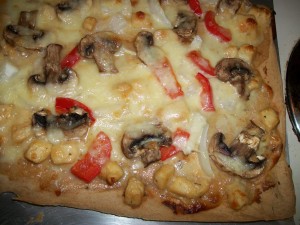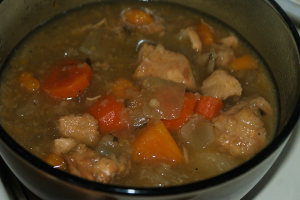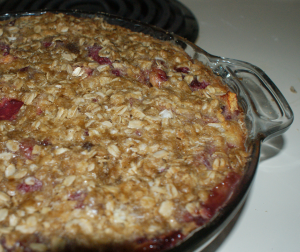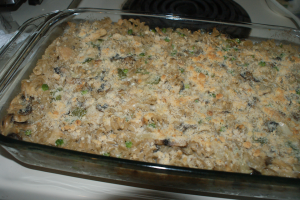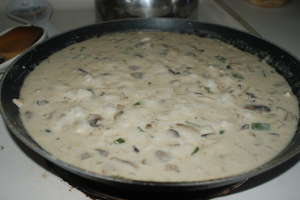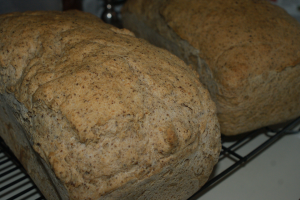Pizza crust is not a hopeless cause for those who are gluten free, but it can be a bit frustrating. In some ways, though, I prefer it. I was never very good at stretching out a pizza dough and spreading it onto a pizza pan, but with this recipe, you don’t do any stretching; the dough is spread over the pizza pan with a spatula, because the texture and consistency is more like batter than dough.
Ingredients
- 1 cup warm water
- 2 teaspoons yeast
- a squirt of molasses
- 2 tablespoons oil
- 1 egg
- 1 tablespoon vinegar
- 2/3 cup potato starch (NOT potato flour)
- 1/3 cup tapioca starch (may be called tapioca flour)
- 3/3 cup sorghum flour
- 1 teaspoon xanthan gum
- 1 teaspoon salt
- 1/8 teaspoon baking powder
Directions
Preheat the oven to 375 degrees.
1. Combine the water and yeast and allow the yeast to dissolve. Add all the other liquid ingredients and mix thoroughly (I use an electric hand mixer).
2. Combine all the dry ingredients and then blend into the liquid ingredients with the mixer. Continue mixing until the batter is smooth.
3. Spray a 15×14 cookie sheet (that’s a little over 200 square inches, in case you need to find alternatives to a 15×14). Dump the batter onto the middle of the sheet and use a sprayed spatula to spread it evenly around. Spread it right to the very edges of the sheet.
4. Place the crust into the oven and cook for 30 minutes, without toppings. While the dough is cooking, prepare veggies, meat, sauce and cheese you will be using to top your pizza. After 30 minutes, take the crust out, raise the oven temperature to 425, and add toppings to the crust. Your sauce and toppings can go pretty much to the edge of the pizza; be aware that the edges will probably be quite crispy, so it’ll be nice to have some toppings there!
5. Put the pizza back in the oven and cook for 10 to 15 minutes, depending on how brown you like your cheese to be!
And that’s it! The pizza in the picture is a chicken pizza with white sauce, mushrooms, onions, and red peppers.
